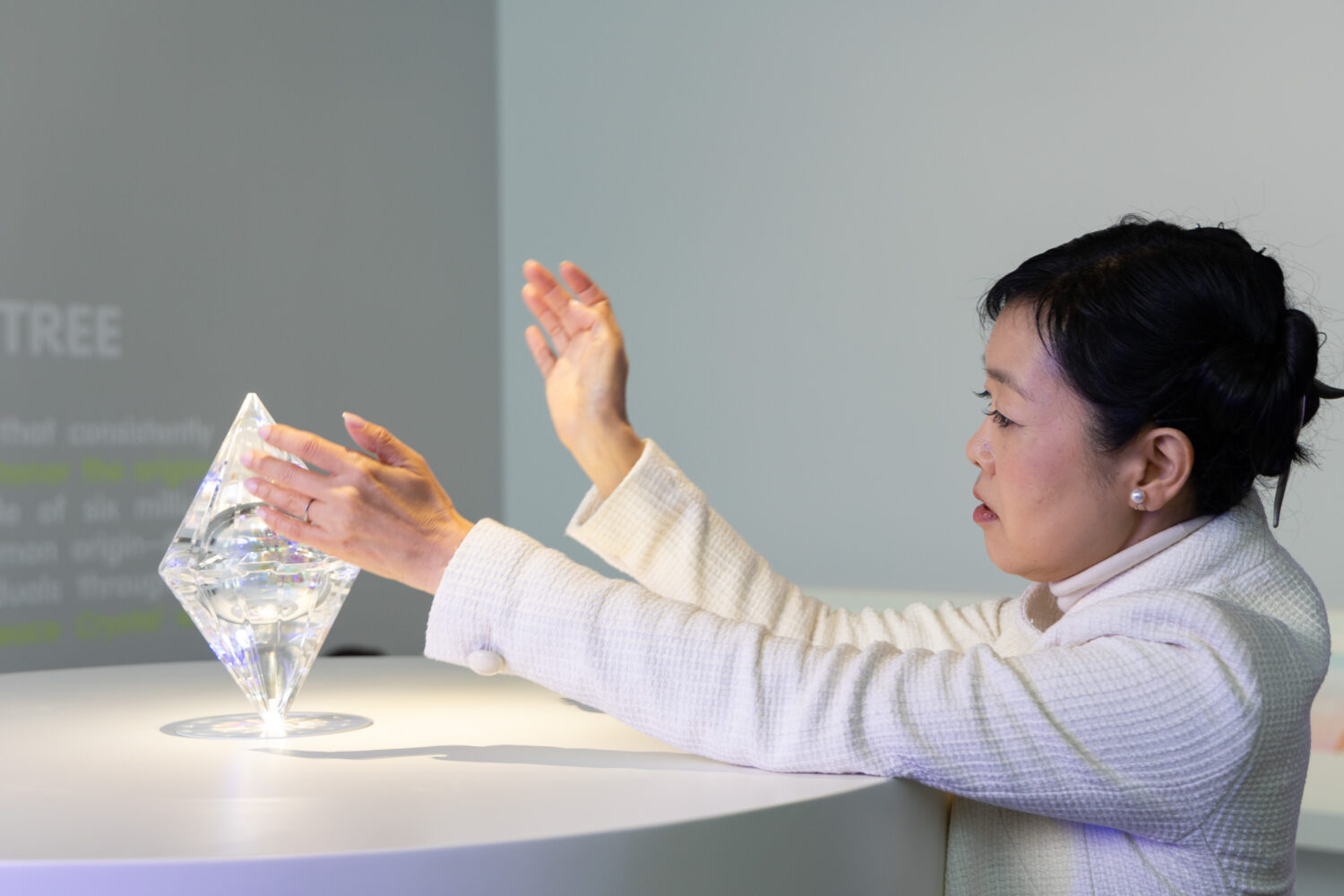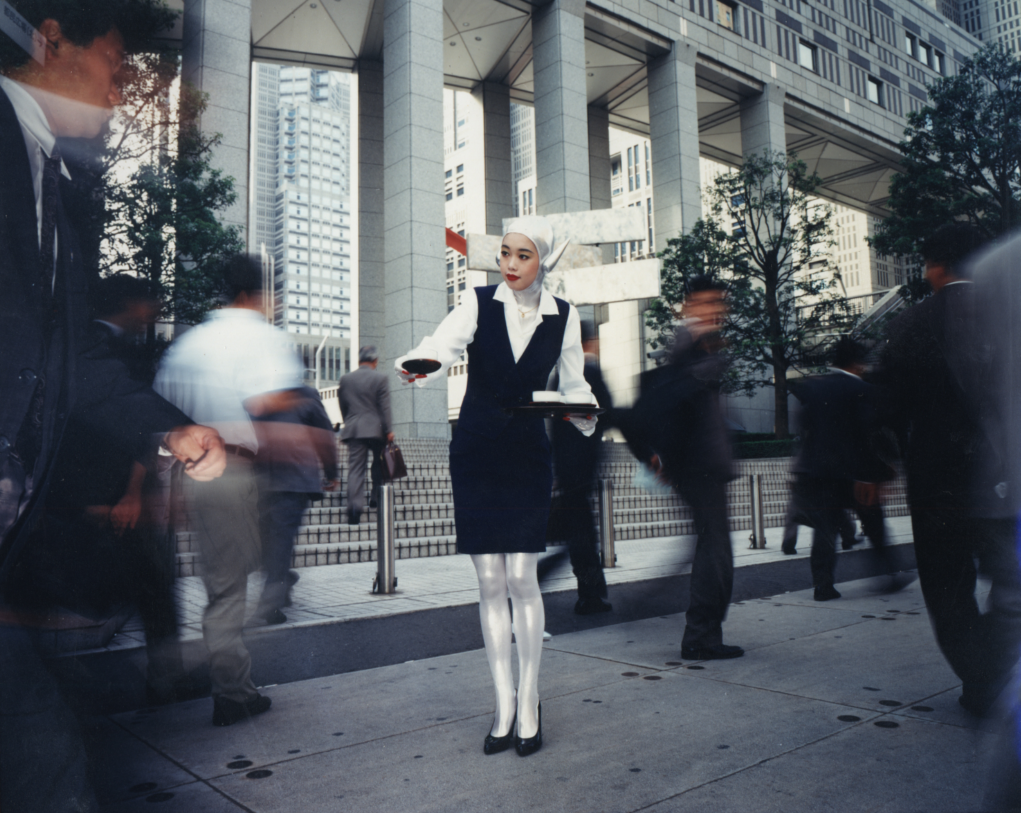From Evolutionary Theory to Sleep Paralysis: In Conversation With Mariko Mori
By Keshav AnandOne of the most influential artists to have emerged from Japan in the last half century, Mariko Mori’s work is grounded in the interconnectedness of all things, delving into universal questions that sit at the junctures of life, death, spirituality, and technology. In her early career, Mori drew inspiration from manga and cyber culture, famously portraying herself as a cyborg heroine navigating the bustle of contemporary Tokyo.
Her artistic output has since expanded beyond that urban hyper-reality to include a fascination with nature and ancient cultures. Embracing a diverse range of media — including installation, sculpture, performance and works on paper — her practice borrows references from disparate visual iconographies to create works that blur the past and future as well as the scientific and sacred.
In her latest project, Mori invites us to consider shared humanity through Peace Crystal, an installation that opens in Venice on 16 June — on display in the garden of Palazzo Corner della Ca’ Granda until October 2024, before its permanent installation in an Ethiopian cave. To learn more about the new work, Faou Foundation, Mori’s remarkable island home, and more, Something Curated’s Keshav Anand spoke with the artist.

Keshav Anand: Could you elaborate on the symbolism behind Peace Crystal?
Mariko Mori: Peace Crystal highlights the body as a vessel for the eternal soul that consistently cycles through life, death, and rebirth. Carefully balanced on its narrowest point, the artwork signifies bipedalism as a significant step in evolution. I believe this pivotal moment led to the development of intelligence and spirituality, as upright posture allowed humans to receive energy from both celestial and terrestrial forces.
KA: Why did you choose the height of 5 feet 6 inches for the piece?
MM: It is the average height of a modern human.
KA: After its stint in Venice, I understand the work will be permanently housed in an Ethiopian cave — what interests you in this final site?
MM: Peace Crystal honours the origins of our shared human lineage beginning in Ethiopia — the cradle of six million years of evolution. Ethiopia has a large number of caves and I would like to dedicate Peace Crystal in homage to our origins and install it in our earliest fundamental home.
KA: I was recently reading about your experiences with sleep paralysis growing up — I’m curious if and how this influenced your work, particularly in regards to your explorations of consciousness over the years?
MM: At that time, I realised the existence of other dimensions or other realities. Since then, I have researched the mind-only school of Buddhist philosophy, which explained the structure of deeper consciousness related to reincarnation. My interest expanded to quantum physics, which introduces the idea that 96% of the universe is an invisible and parallel world. I discovered there is a similarity in this concept with Buddhist philosophy.
Moreover, the concept of heaven in Christianity and the Pure Land of Buddhism are closer in vision. The visions of the creator and Buddha seem to be both portrayed as a great light. The compassion of God and Buddha are always with us but we cannot see them. What we believe as reality may not be the only one as we are driven by our ego and body to see only the physical world when, in fact, we are all connected as a whole.

KA: What inspired you to launch Faou Foundation?
MM: I was simply moved by pristine nature and how beautiful the natural world is. Our life is completely sustained by nature but we are losing the natural environment around the world. In my country, we have a longstanding tradition to worship nature, which has helped preserve natural environments. I trust in the power of art and believe that art installations can help protect nature.
I hope to share our sincere respect for nature through art installations. When I visited ancient civilisation ruins and archaeological sites from 3000BC to 500AD around the world, I realised these were symbols of our remote ancestors honouring nature. I wanted to extend this essential tradition of human history in the contemporary world.
KA: I want to ask you about an all time favourite work, Beginning of the End. What was the idea behind the capsule?
MM: The body capsule signifies a symbol of transcending time and space. I have used a 360-degree camera to photograph the city of the past, present and future around the world to connect the East and West, and the time of the past, present and future.
KA: The videos you share on Instagram of your home on Miyako Island are completely mesmerising. How did the architectural concept for Yuputira House come about?
MM: The first vision came to my mind almost 17 years ago. The idea was to build a house just like the white coral stone found on the beach. The form of the building harmonises with the surroundings but when you are inside, it feels almost like a cocoon or inside a cave. At the same time, however, it eliminates all boundaries so you feel like you are in the ocean.
KA: Shifting gears, if you could have a conversation with any historical figure, who would it be and what would you discuss?
MM: I would like to discuss oneness and wholeness with Sen no Rikyū.
KA: What do you like about wearing white?
MM: The colour white is closest to the light.
KA: What’s your favourite smell?
MM: The scent of aloeswood.
KA: And what are you currently reading?
MM: I am reading Daisetsu Suzuki again which I read when I was in my 20’s but now I understand it much better.
Feature image: Mariko Mori, Beginning of the End, Shibuya, Tokyo, 1995. Courtesy Mariko Mori